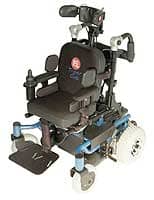As breast cancer awareness month is observed during October, the American Physical Therapy Association (APTA), Alexandria, Va, shines a spotlight on lymphedema, a chronic, debilitating and often irreversible side effect of cancer treatment. According to APTA, breast cancer patients who seek the services of a physical therapist can reduce their risk of lymphedema, as it can be prevented or more effectively managed if caught in its earliest stages and treated by a physical therapist.
Breast cancer-related lymphedema, which can cause significant swelling of the upper and lower extremities due to the buildup of excess lymph fluid, is mostly caused by damage to the body’s lymphatic system during treatment for cancer and can include limited movement, joint pain, and difficulty performing activities. Physical therapists play an important role not only in treating the effects of lymphedema but also in reducing the risk of occurrence.
A study published in the journal Cancer (April 25, 2008) showed that preoperative assessments of patients with breast cancer by physical therapists allow for earlier diagnosis and treatment of lymphedema. This includes programs that use infrared technology to measure limb volume and regular post-operative follow-up to detect lymphedema.
The study further demonstrated that when lymphedema was detected early, the patient’s condition was managed with a more conservative approach that included a light-grade compression sleeve and hand gauntlet that effectively decreased early swelling and possibly prevented the progression of lymphedema. Fitted by a physical therapist, these were prescribed for daily wear.
"Lymphedema is normally treated with more aggressive and often costly and time-consuming techniques, such as complete decongestive therapy," said Nicole Stout, PT, MPT, CLT-LANA. Complete decongestive therapy requires the patient to attend daily therapy sessions for weeks and wear bulky compression bandages.
"This study clearly demonstrates the fact that lymphedema can be managed with a more conservative treatment option when diagnosed in its earliest stages, which is good news for patients with breast cancer," Stout said. "Based on these findings, we encourage patients with breast cancer to seek referral for physical therapy services before, during, and after breast cancer treatment because arm problems can occur at any time during the course of care and the best outcomes are reached when they can be detected early, or even prevented.
"We hope physicians, surgeons, oncologists, and other physical therapists will make early intervention and conservative treatment of lymphedema the standard of care in breast cancer treatment," Stout said.
Babette Sanders, PT, MS, knows firsthand the benefits of using physical therapy for prevention and maintenance of keeping lymphedema at bay. "Swelling occurred immediately in my upper arm and trunk after my mastectomy," she said. "By quickly incorporating physical therapy as part of my overall management of the condition, I was able to get rid of the swelling and have since kept it away. I am able to remain lymphedema free with monthly preventative treatment. It makes a tremendous difference in the quality of my daily living and my ability to move and function."
Some risk factors, such as the necessary treatment for cancer, cannot be avoided. However, there are many things you can do to help reduce the risk of lymphedema, such as having a physical therapist create an exercise program tailored to your individual needs and monitor its effect on your limb.
Stout recommends patients with breast cancer be aware of their risk factors and indicators of the onset of lymphedema:
Warning Signs:
- Aching or heaviness in the limb that was affected by cancer treatment
- A feeling of fullness or tightness in the limb affected by cancer treatment
- Visible swelling that affects the limb affected by cancer treatment
Risk Factors:
- Being overweight or gaining weight during or after cancer treatment
- Having lymph nodes removed
- Having radiation therapy
- Having an infection or blood clot in the limb affected by cancer treatment
[Source: APTA]




